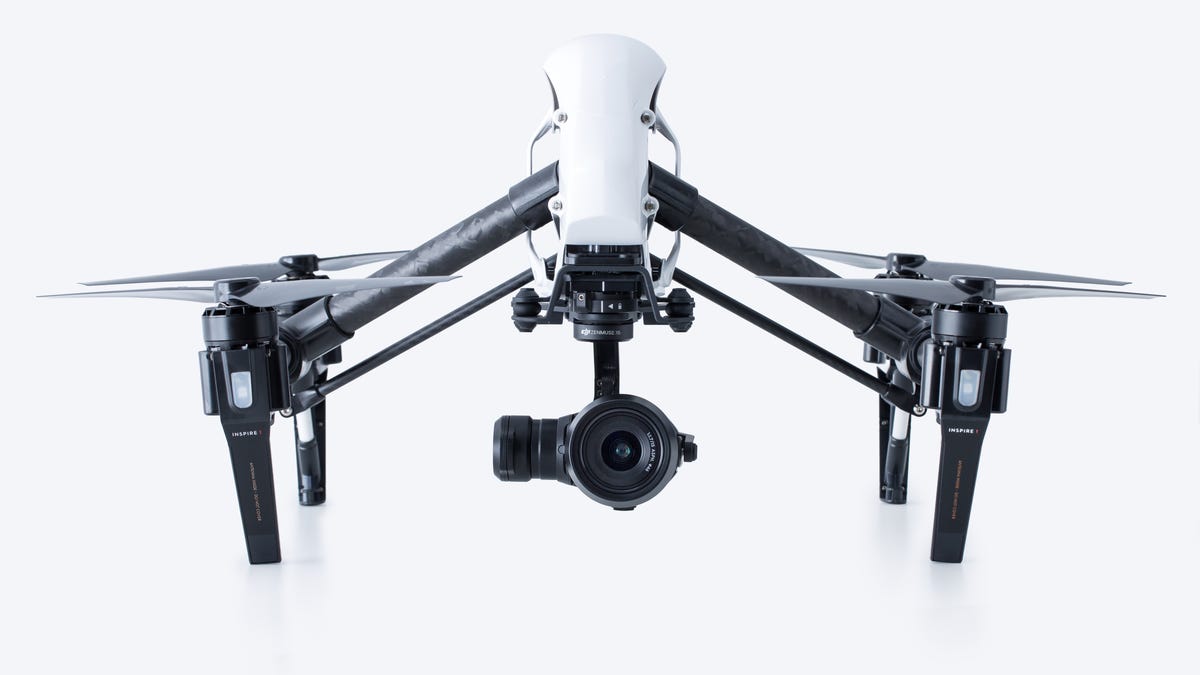Drones in 2015 move from 'wow, that's neat' to 'uh-oh'
These aerial toys and tools now are on the FAA's regulatory radar. Rules are tightening for consumers but should loosen for businesses.
In 2015, as drones started swarming the skies, the small unmanned aircraft transformed from novelty gadget to regulatory headache.
Drones, most often camera-equipped quadcopters whose four computer-controlled rotors keep them aloft, are hot items as consumers snap them up and businesses put them to use. While the Federal Aviation Administration bans businesses from using them, it's easy for some to shirk the law. A real estate agent, for example, can zip a drone above a house for a quick aerial photo without the authorities ever noticing.
With both drone markets moving fast -- Amazon just unveiled its newest ideas for delivery drones -- the regulatory agency is scrambling to modernize its drone rules. This year, it proposed rules for business uses and a registration requirement for consumers.
It's a tough balancing act. On one side are consumer demand and commercial innovation, and on the other, serious risks to the public and to traditional aircraft. The entertainment and business advantages of aerial photography will pale as soon as a drone collides with a traffic helicopter or drops a heavy video camera onto a concert crowd. In 2016, such risks won't go away, but with a requirement to register drones, there's a stronger incentive not to fly drones irresponsibly. Authorities should have an easier time handling trouble like drones crashing on the White House lawn or disrupting firefighting.
Although we might not see fewer drones in the sky in 2016, the airspace will no longer be quite as freewheeling. After finding a Parrot Bebop 2.0 under the Christmas tree, you may have to share your name and address with the federal government and ink a registration number on the drone before the maiden flight.
Consumer crackdown
Over the last few years, the consumer market for drones exploded even as the FAA wrestled with commercial drone regulation. FAA Administrator Michael Huerta expects 400,000 drones to be sold this holiday season, ranging between $40 toy drones and more advanced $1,000 hobbyist-oriented models.
They're all legal, but flying them near airports and other sensitive sites isn't necessarily allowed.
Evidently the FAA decided it needs a better grip on the situation, because in October, it announced a plan to require drones to be registered. A task force recommended the owners themselves should be the ones responsible for registering any drone weighing a half-pound or more.
Drone makers are responding, too. DJI, a Chinese drone maker and market leader, has software designed to restrict drones from entering no-fly zones. In November, it expanded the technology to accommodate real-time restrictions related to stadium events and forest fires.
Commercial rules about to loosen
It's going to be a lot easier for businesses to use drones in the future. The FAA in February proposed regulations that proved to be surprisingly accommodating, permitting use for real estate photography, movie making, plant inspection, construction monitoring, livestock tracking, and search and rescue. The agency has already granted exemptions that let more than 2,400 businesses use drones.
Amazon's hybrid drone behaves as both a helicopter and airplane.
"Drones are already performing commercial tasks that are dirty, dull and dangerous," analyst firm Forrester said in a September report.
The FAA's proposed rules, which likely will take effect by mid-2016, don't yet accommodate more radical drone ideas, notably the expectation at Amazon, Walmart and Google that drones will deliver packages. That would require drones not only to fly beyond an operator's line of sight, something the FAA's proposal prohibits, but also to pilot themselves.
Package delivery poses plenty of challenges when it comes to bad weather, the myriad configurations of houses and businesses receiving packages, and avoiding collisions with trees, power lines and of course people. It's no wonder that startup Starship Technologies is betting instead on robotic wheeled delivery vehicles that stick to the ground.
The FAA isn't moving fast enough for Amazon's tastes, but the agency has approved a drone delivery test in Wilmington, Ohio, said Steve Burns, CEO of Workhorse Group. His company, which makes delivery trucks, hopes to speed delivery and lower fuel consumption by tucking its Horsefly delivery drone in a hatch atop its electric trucks.
Reputation concerns will ensure businesses keep their delivery drones safe, Burns said. With drones sporting company logos and company colors, he said, "a brand doesn't want the drone to be part of an incident."


